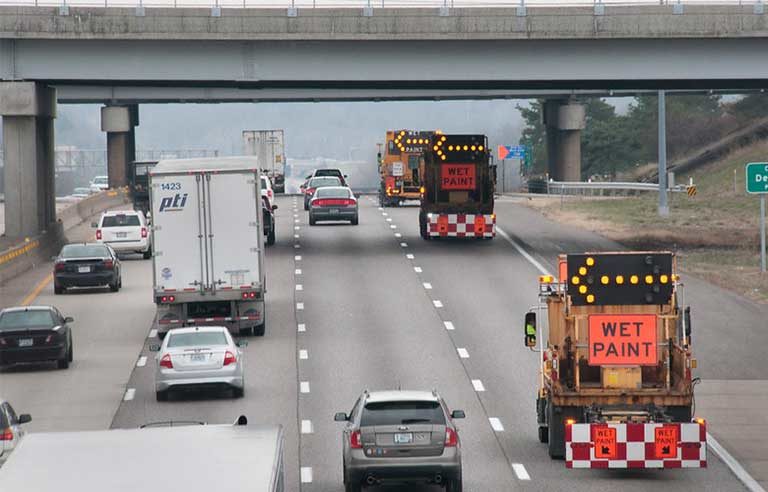Self-driving vehicles could reduce risk in mobile work zones: study

Columbia, MO — Using a self-driving truck to follow a manned vehicle during “moving work zone” operations could help prevent roadway worker injuries, results of a recent study show.
Moving work zones involve crews completing work from a series of vehicles. According to the University of Missouri Department of Civil and Environmental Engineering, the last vehicle in the line faces highest risk of involvement in an incident.
“We want to eliminate worker injury by getting the driver out of the last vehicle,” study co-author Henry Brown, a research engineer at Mizzou, said in a press release. “The idea is that you pair the last two vehicles as a leader and a follower retrofitted with kits that allow the second vehicle to follow GPS crumbs from the vehicle in front of it.”
Under this configuration, an operator in the leader vehicle uses a tablet to control the follower truck, setting the vehicle’s speed and maintaining its following distance. The controls also allow for stopping the follower vehicle – equipped with detection systems for front and side obstacles – in emergencies.
“Overall, the study findings indicate that the leader-follower system has the potential to be an effective tool to improve safety in mobile work zones,” Brown said. “If the driver is removed from the follower truck, we’re reducing exposure to risk. Even if the driver remains in the follower vehicle, the system would allow the driver to focus more, improving safety.”
| Sign up for Safety+Health's free monthly email newsletters and get the news that's important to you. |
The researchers received responses from 43 state departments of transportation after conducting a nationwide survey about the use of autonomous work vehicles. Four states – Colorado, Missouri, North Dakota and Rhode Island – are using or in the process of implementing the leader-follower method, while 19 are exploring the system. Some states would need to amend their laws to allow the removal of drivers from follower vehicles, Brown said.
The study is set for release in March, when the researchers present their findings to the Missouri DOT.
Post a comment to this article
Safety+Health welcomes comments that promote respectful dialogue. Please stay on topic. Comments that contain personal attacks, profanity or abusive language – or those aggressively promoting products or services – will be removed. We reserve the right to determine which comments violate our comment policy. (Anonymous comments are welcome; merely skip the “name” field in the comment box. An email address is required but will not be included with your comment.)

